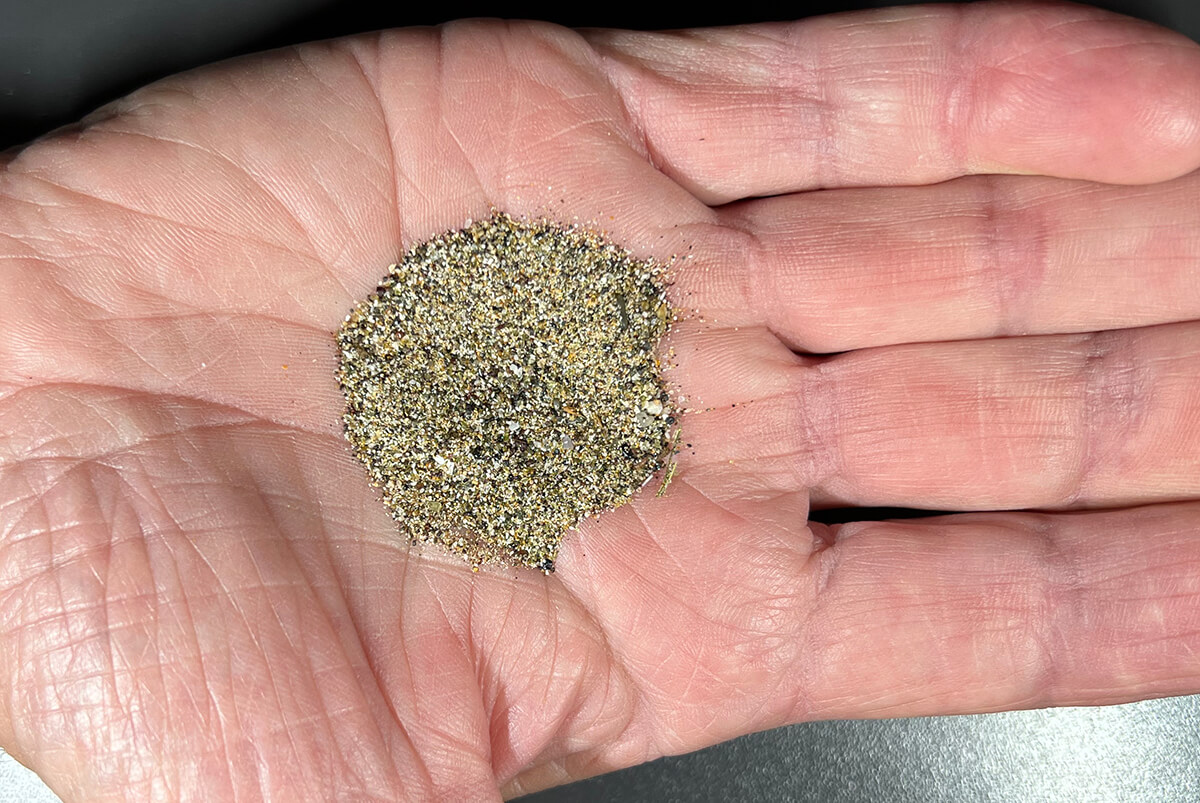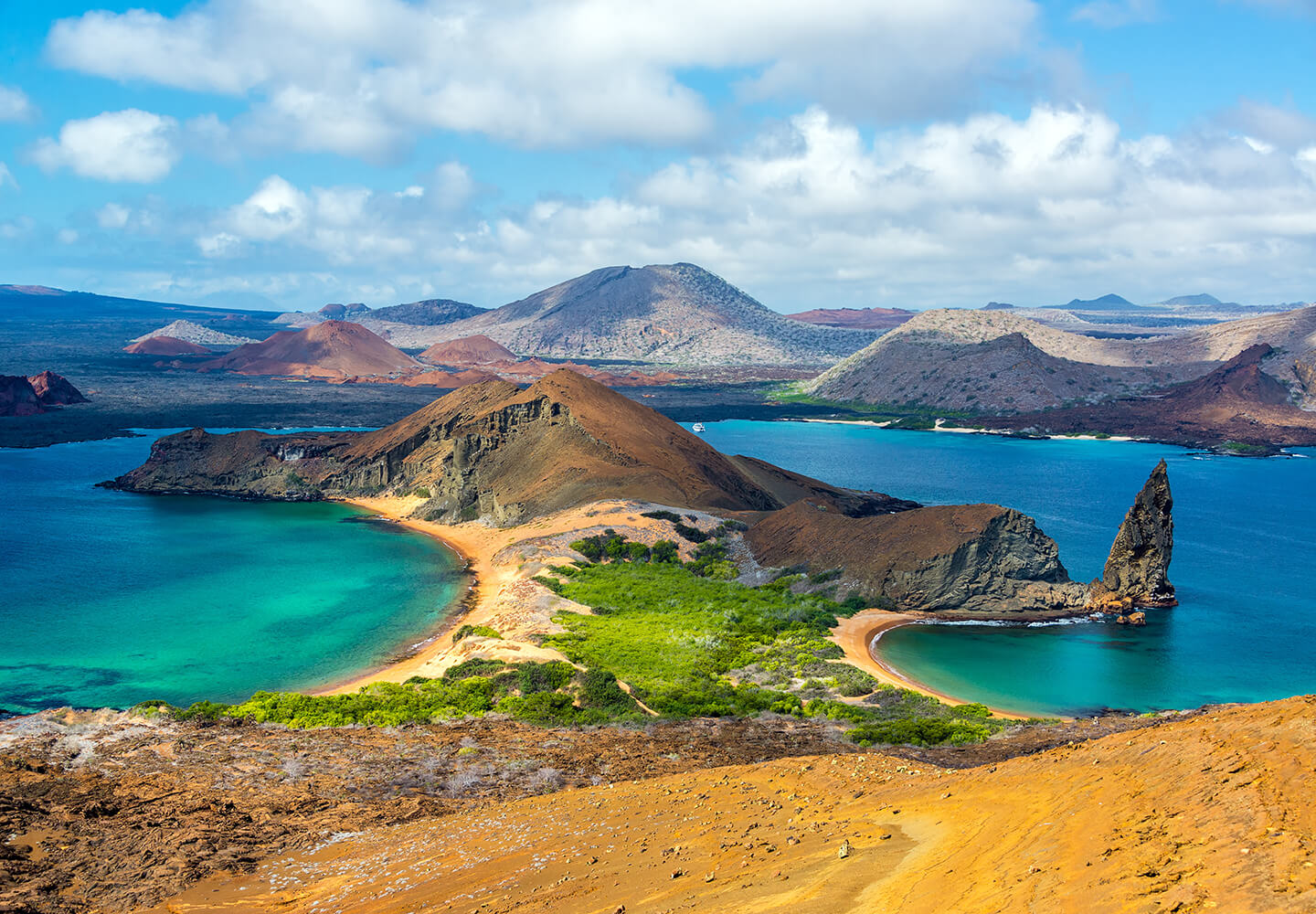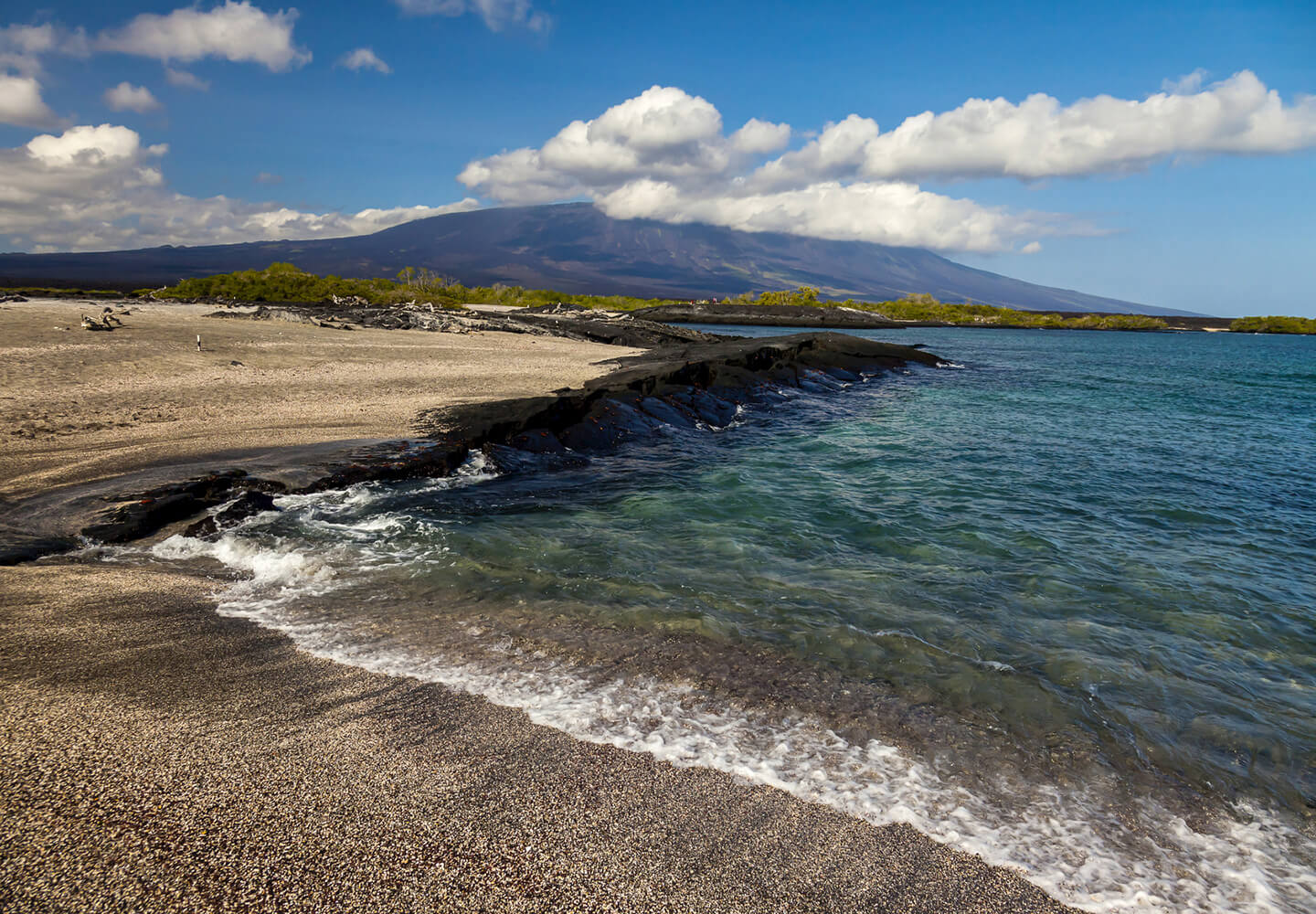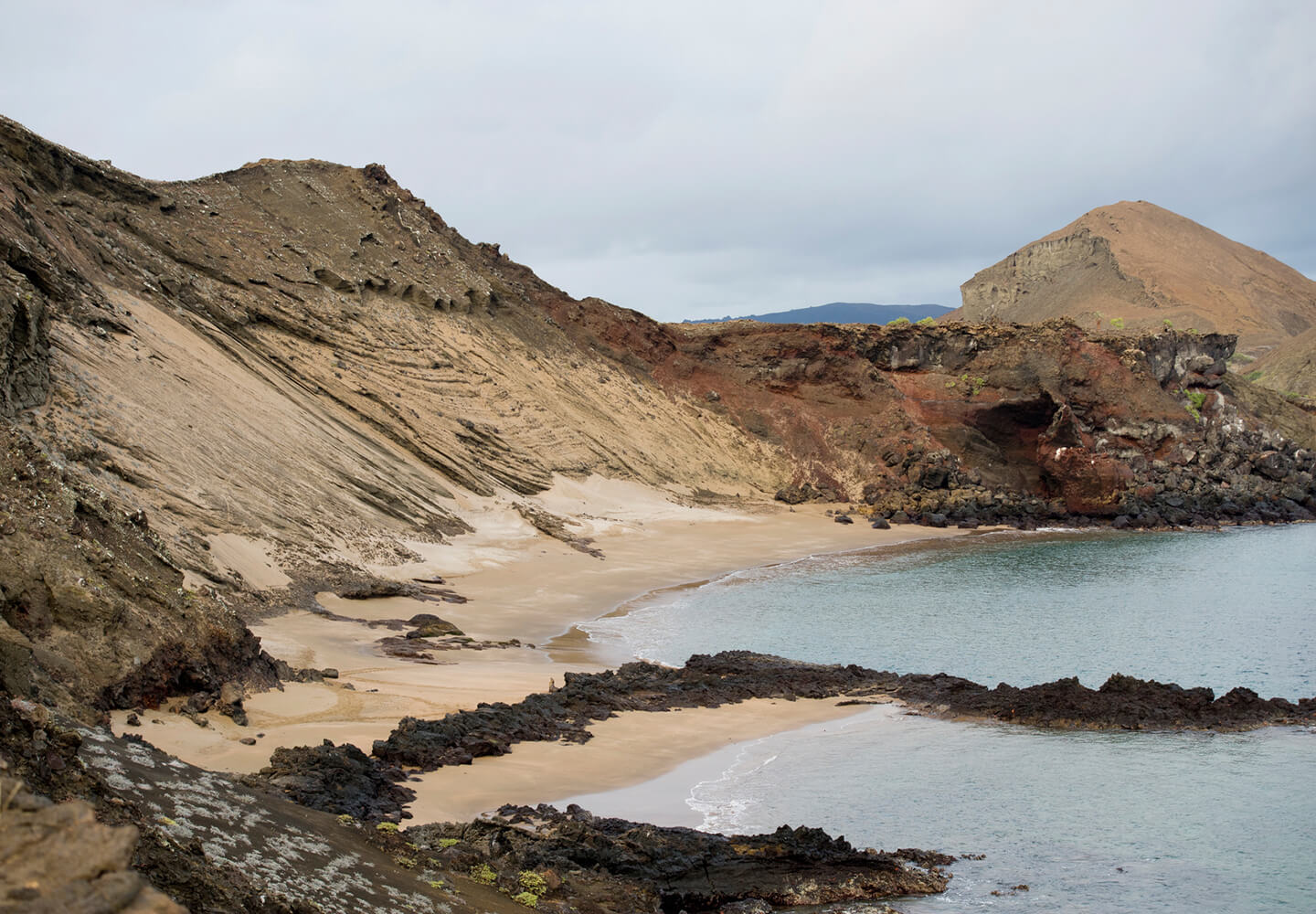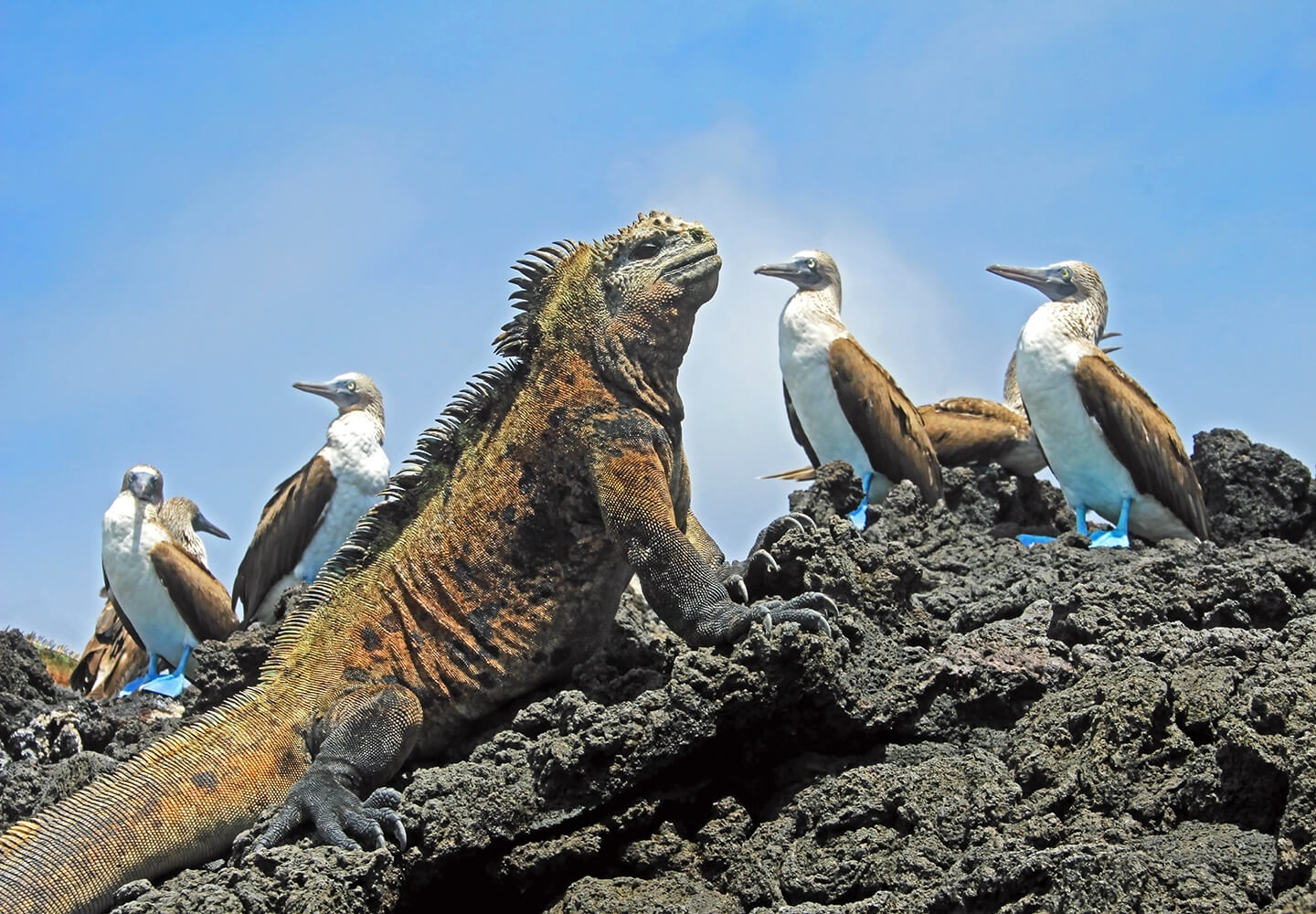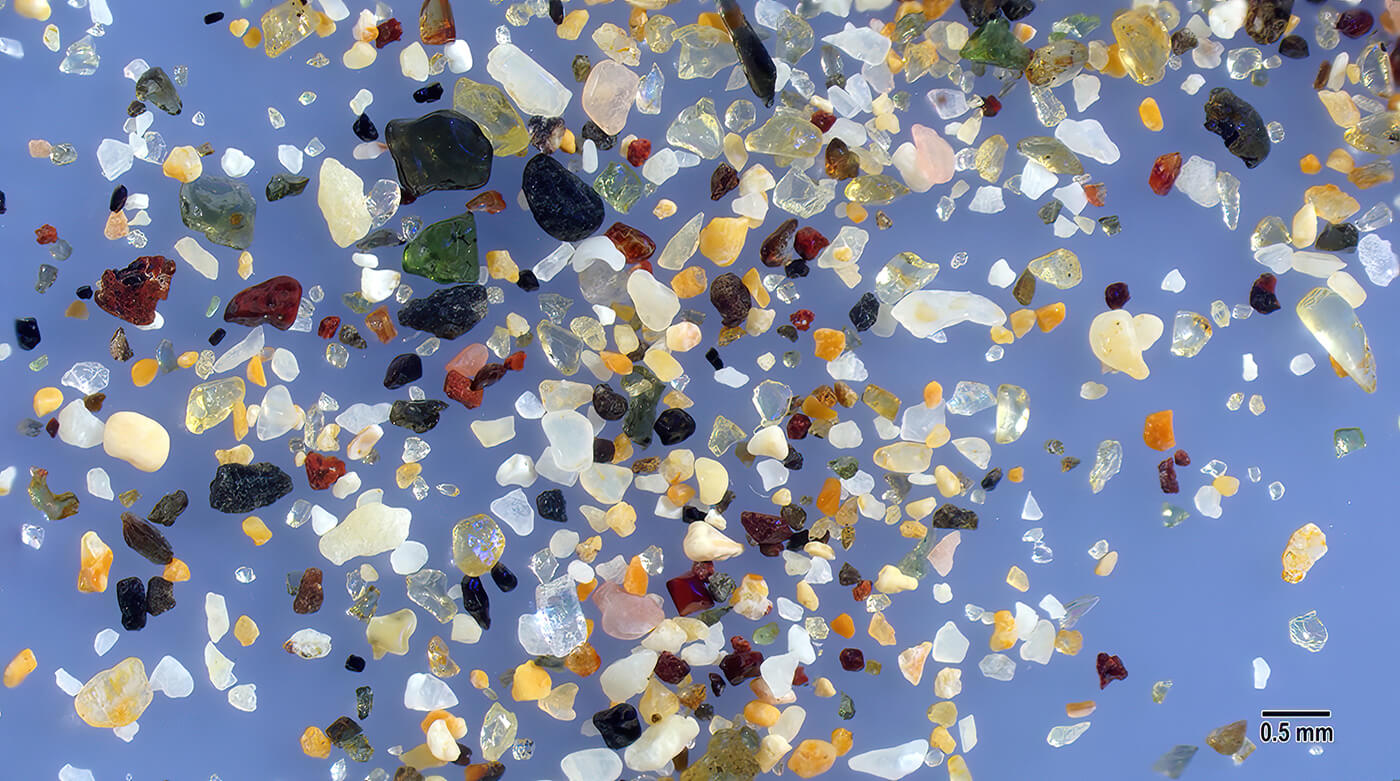
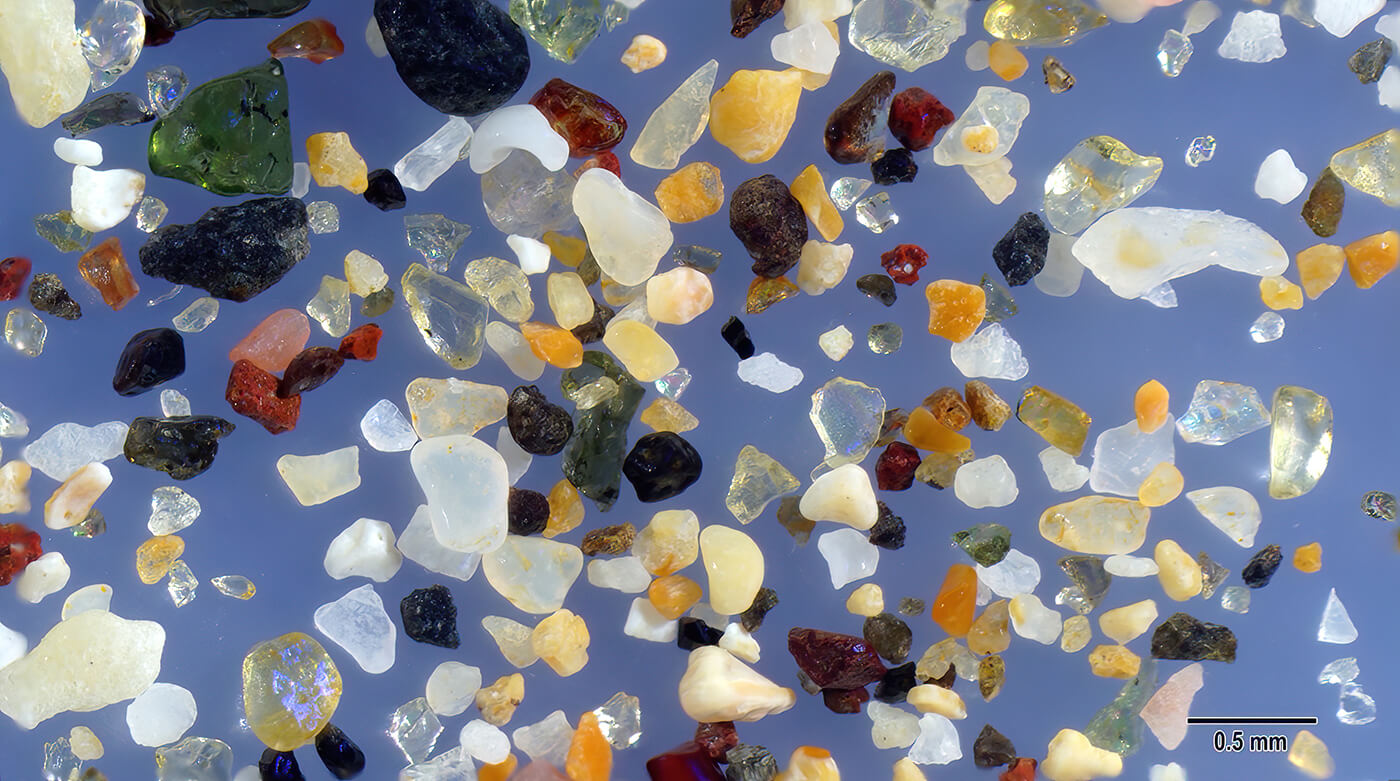
Galapagos sand is a mixture of geological and organic grains reflecting the origin of the islands and its unique biodiversity of marine life. Marine sand grains are white, opaque, and tan with smoothly rounded edges. Geological sand grains have sharper edges and include clear quartz along with red and green sand grains.
Geographic Overview
Galapagos geography includes a wide spectrum of sandy coasts, tropical areas, mountains reflecting past volcanic activity, and a unique biodiversity of animal life, including here a marine iguana and blue footed boobies.
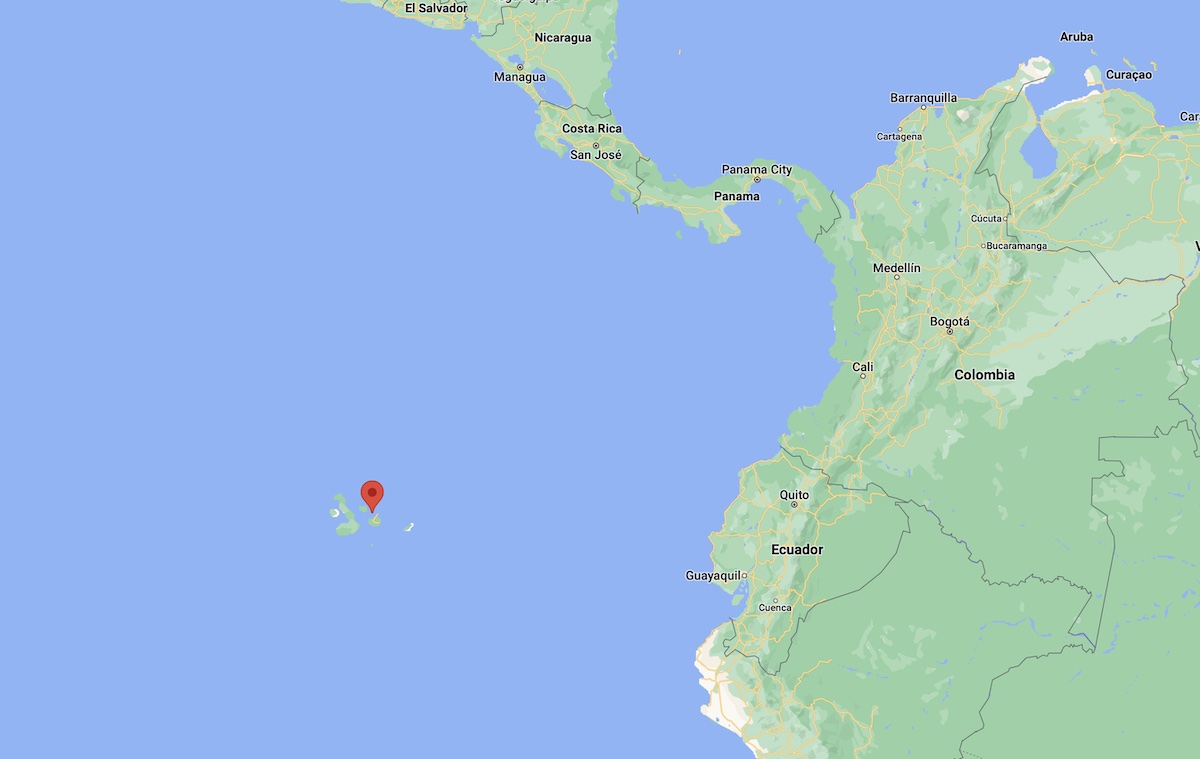
Sand Location
See where this sand sample was collected on Google Maps.
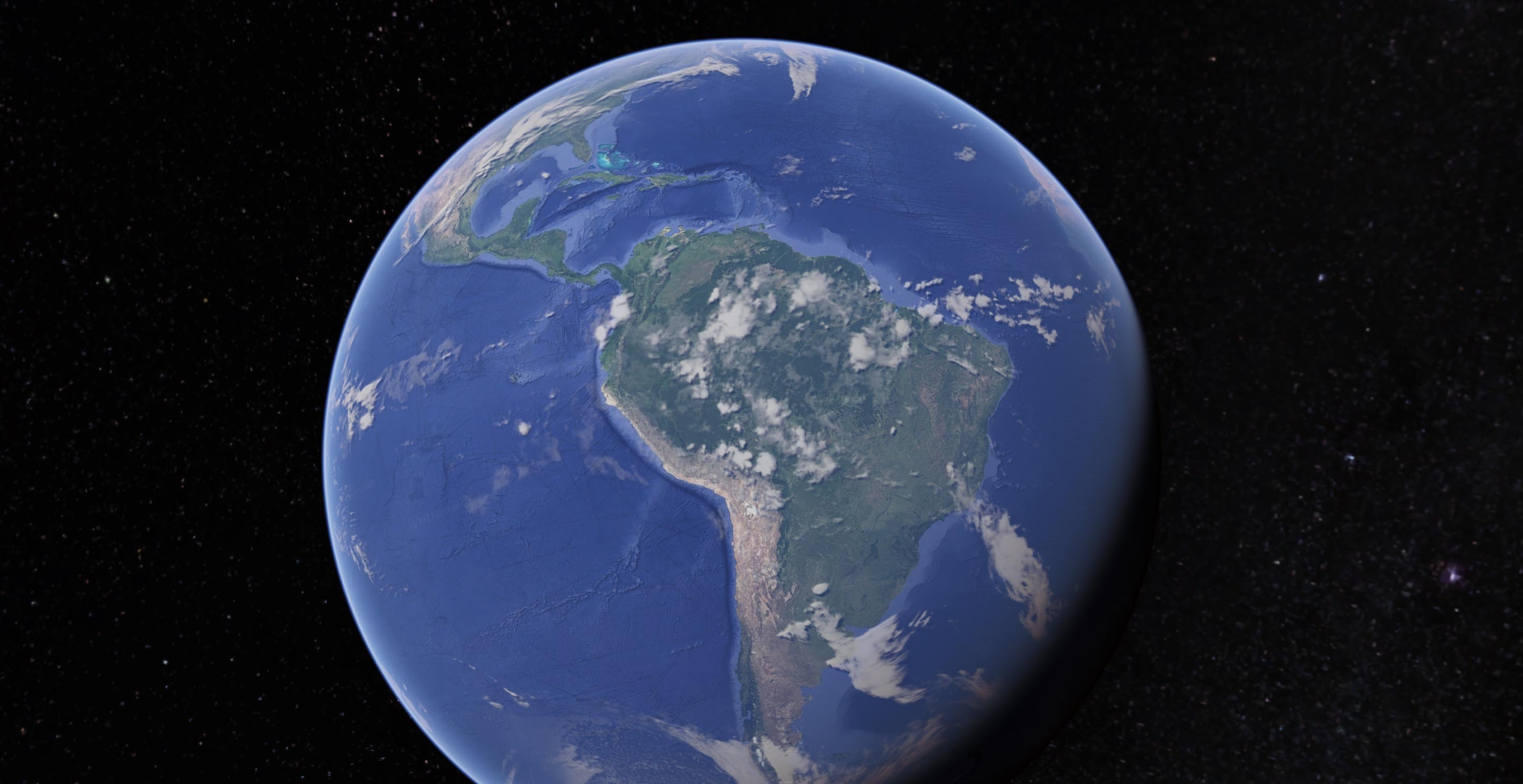
Virtual Sand Tour
Explore an interactive map of Galapagos Island on Google Earth.
Sand Gallery
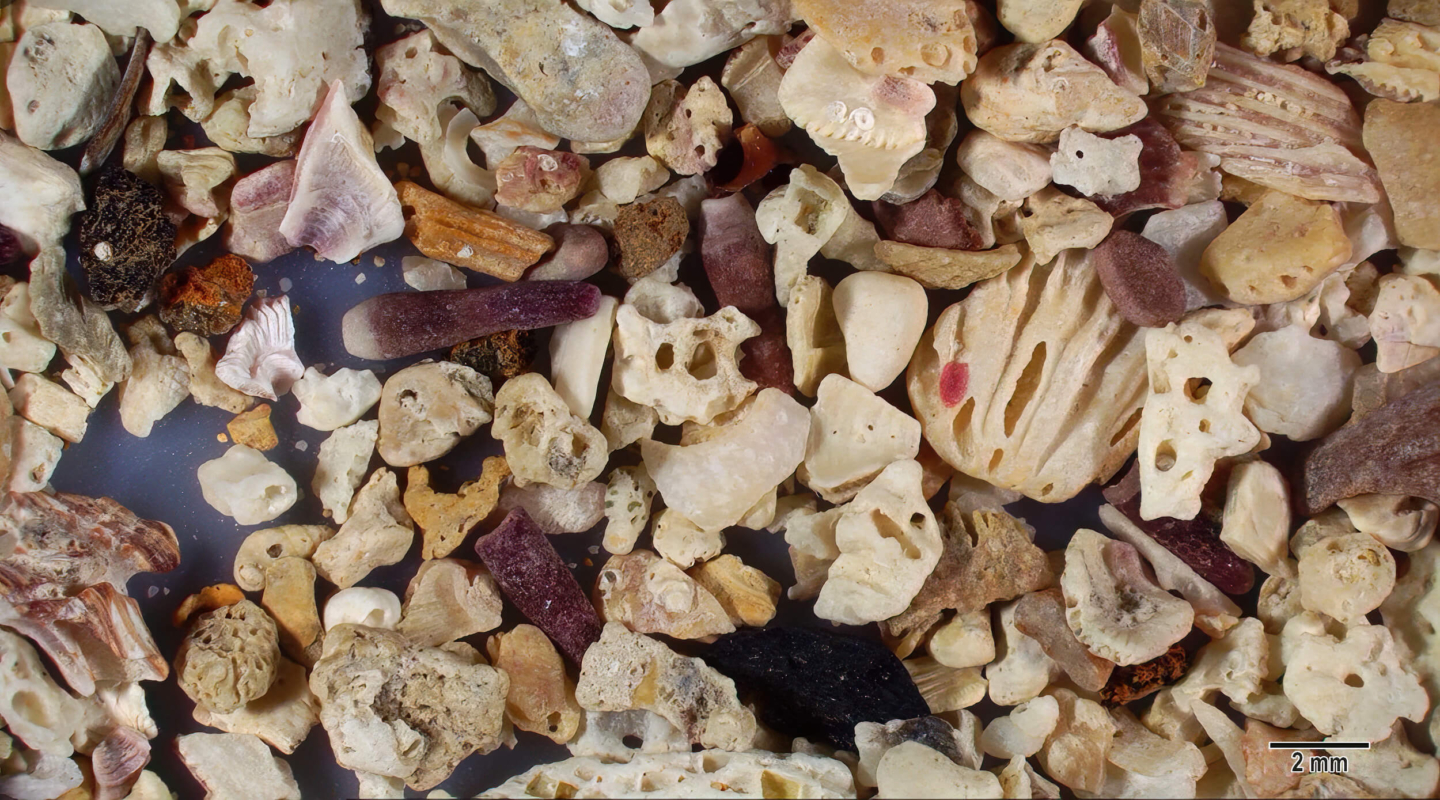
Courser sand areas include fragments reflecting the diverse marine life including worn fragments of tan and reddish bivalve chards, barnacles, micromollusk gastropod shells, and smoothly worn linear purple sea urchin spines. Irregular holes in shell fragments are evidence of predation and bioerosion.
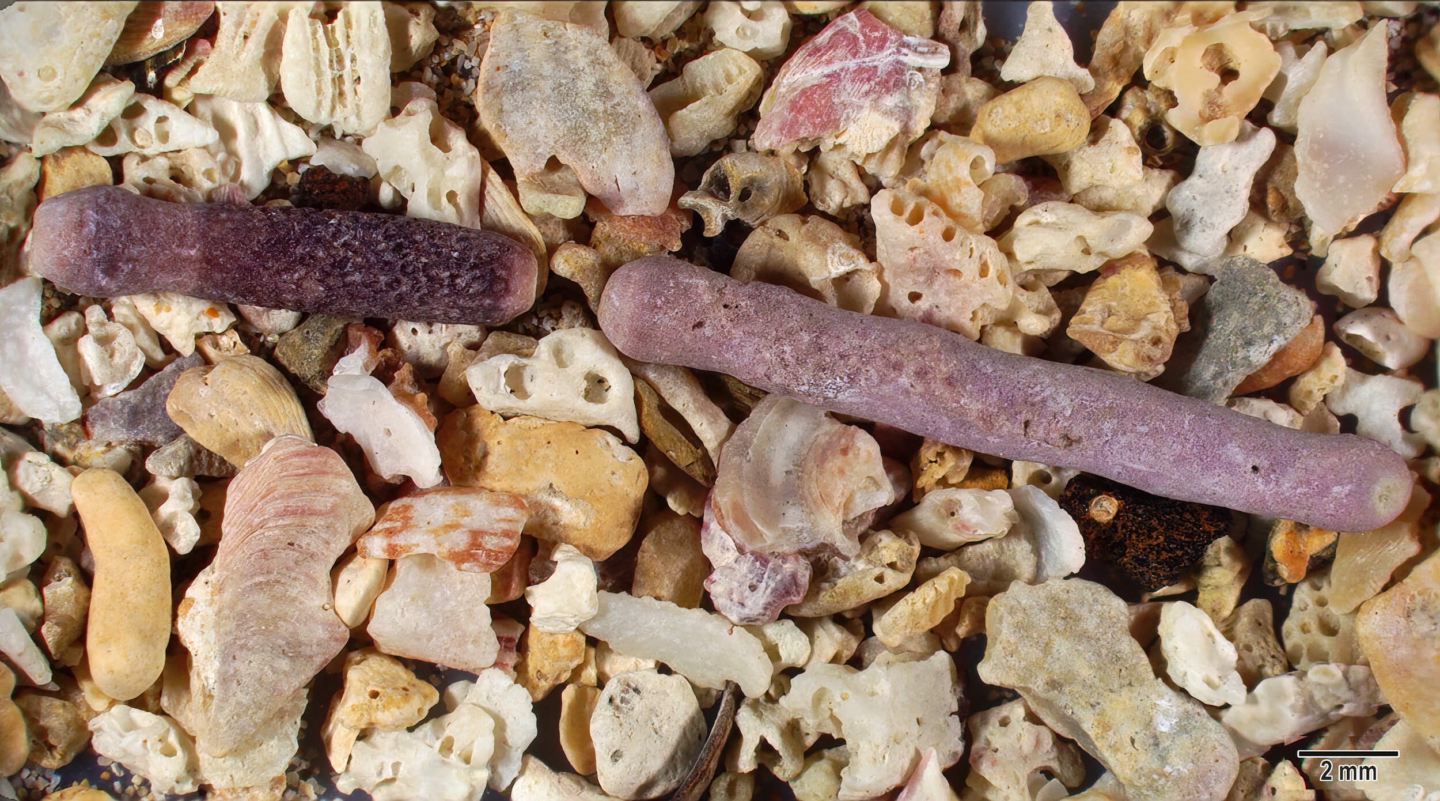
Courser sand areas include fragments reflecting the diverse marine life including worn fragments of tan and reddish bivalve chards, barnacles, micromollusk gastropod shells, and smoothly worn linear purple sea urchin spines. Irregular holes in shell fragments are evidence of predation and bioerosion.
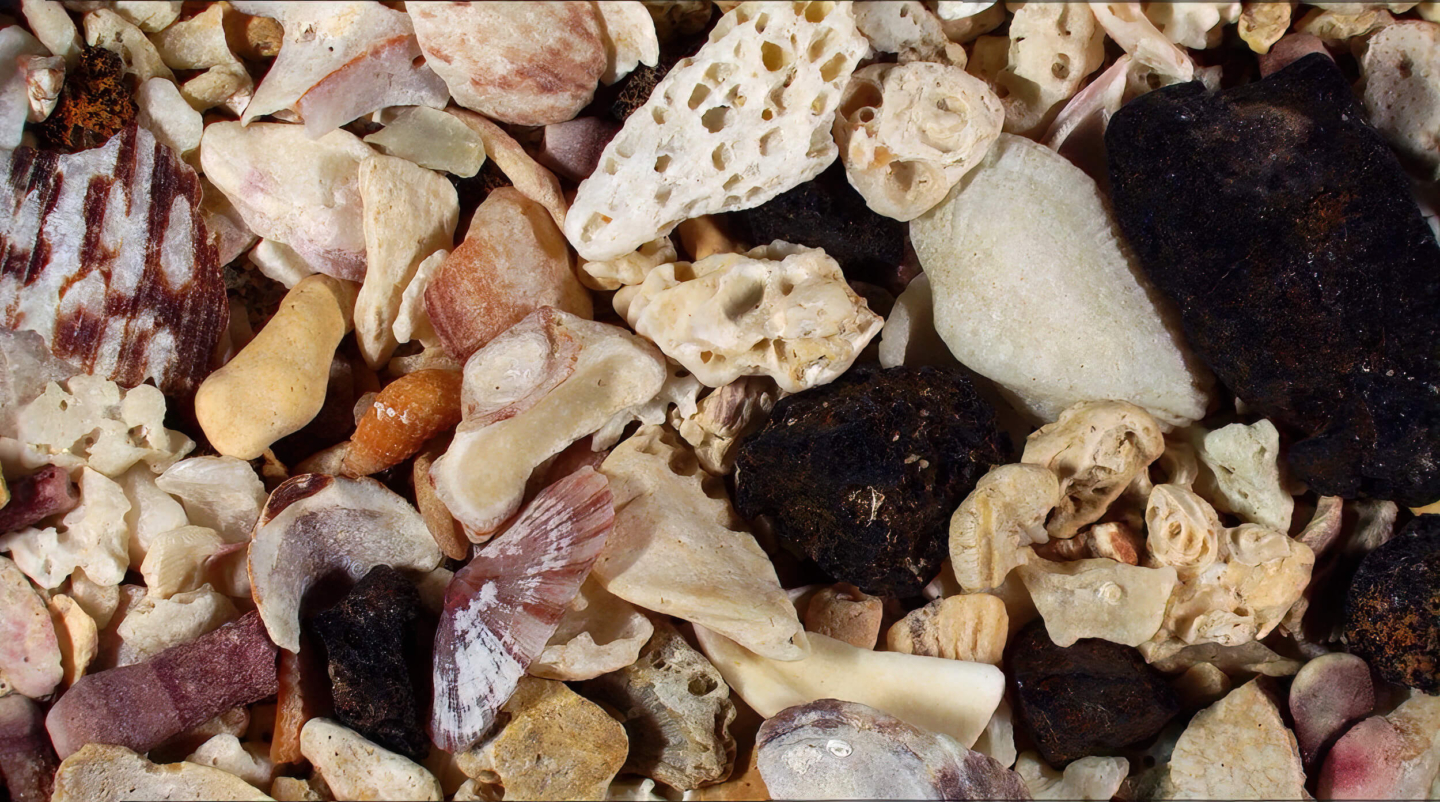
Courser sand areas include fragments reflecting the diverse marine life including worn fragments of tan and reddish bivalve chards, barnacles, micromollusk gastropod shells, and smoothly worn linear purple sea urchin spines. Irregular holes in shell fragments are evidence of predation and bioerosion.
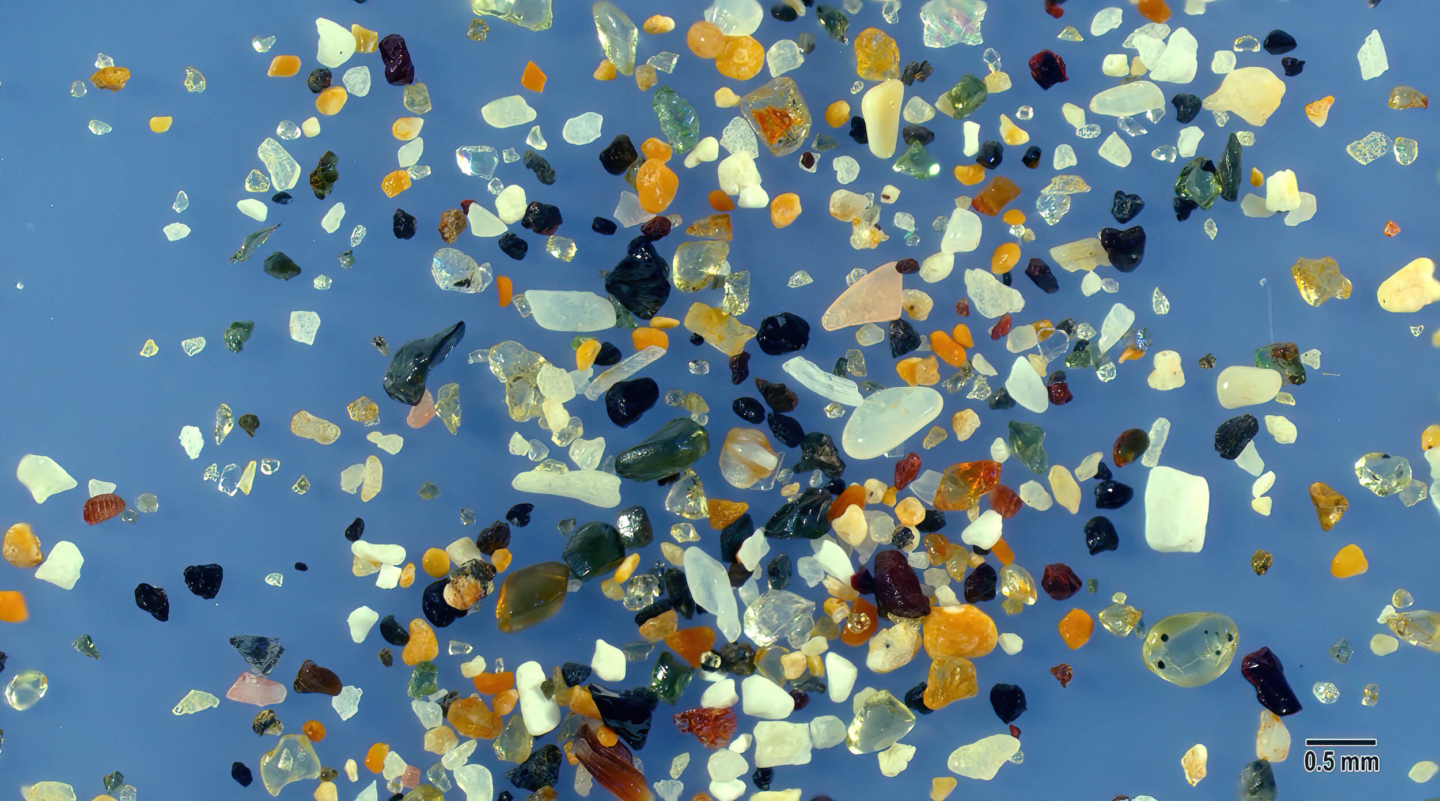
Well-worn sand grains with smooth edges include clear and opaque cloudy quartz, some with small black inclusions, red and black volcanic sand grains, and small bits of worn shell fragments.

This higher magnification of sand consists primarily of geological grains including clear, tan and opaque quartz along with black and colorful red, green and black volcanic sand grains. Occasional pure white smooth grains are probably worn shell fragments.
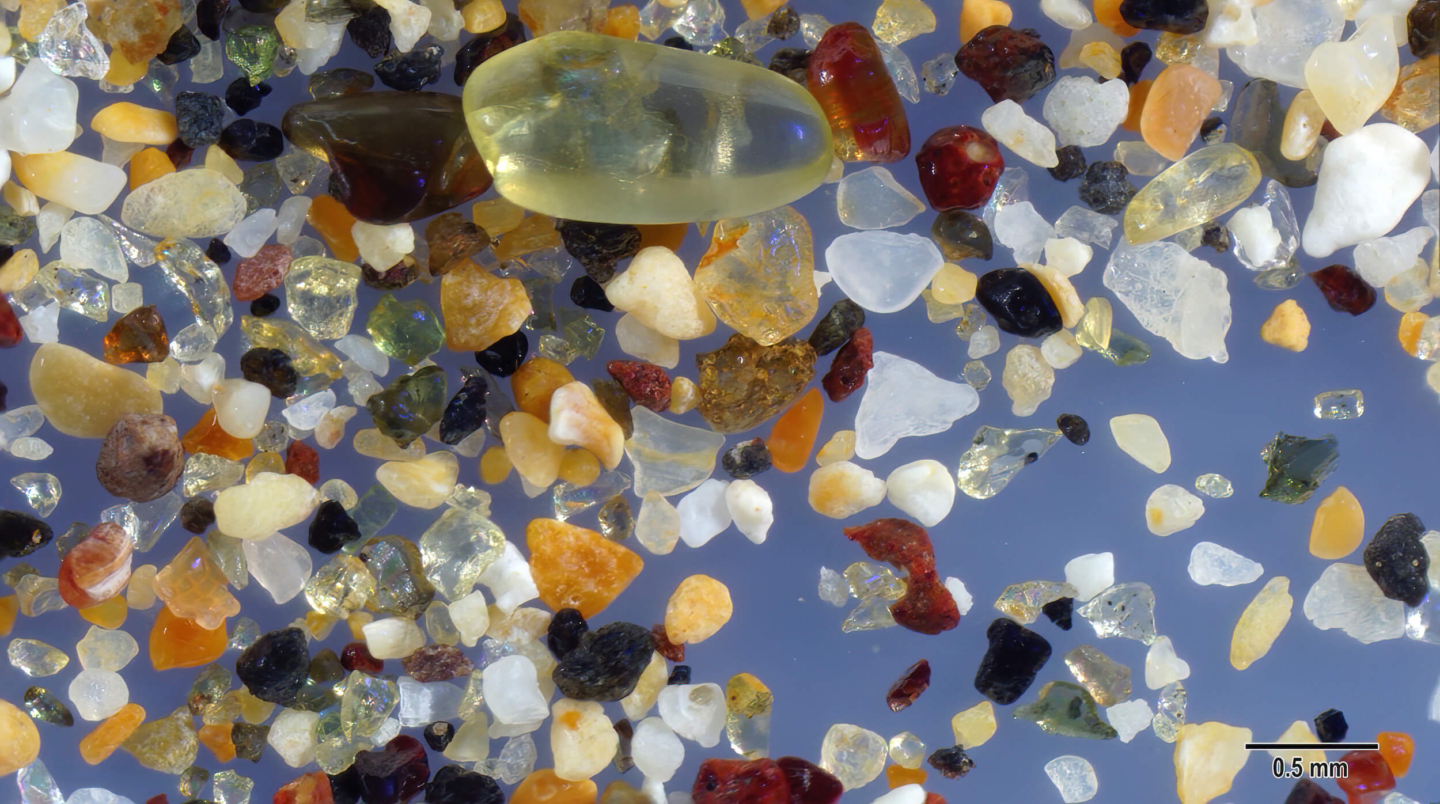
This mixture of sand grains includes clear and translucent greenish-yellow quartz with relatively sharp edges, deep red and black volcanic grains, a few shell sand grains, and an unusually large, smoothly worn translucent greenish-yellow sand grain.
